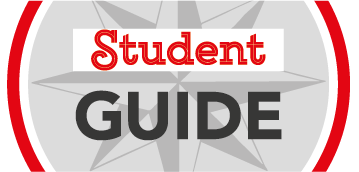Accident prevention is everyone’s responsibility. We therefore invite you to read the complete Directive sur les règles de sécurité en laboratoire, atelier et hangar (Directive on safety rules for laboratories, workshops and hangars).
Here are some of the key elements of this policy.
Safe behaviour
It is essential to adopt safe behaviours when carrying out practical work, whether in a laboratory, workshop, hangar or another environment (section 7.12 of the Directive), including
-
- Wear clothing appropriate to the activity (tight-fitting clothing, laboratory coats, no sweats, etc.).
- Comply with instructions for wearing personal protective equipment (PPE)
- Tie up your hair
- Do not use a mobile phone
- Do not wear headphones
- Do not listen to music
- Do not wear jewellery, watches or other accessories
Personal protective equipment (PPE)
Personal protective equipment (PPE) protects you by controlling your exposure to certain hazards (section 7.15 of the Directive). It includes protective clothing, safety glasses, safety footwear and many other types of equipment.
At the start of your training, your instructors will inform you of the personal protective equipment you will need to buy, either from the ÉNA Coop or from specialized stores. Some equipment can also be loaned/rented to you, for example from the ÉNA store.
You must wear the PPE required for the activity in question, as indicated in your lesson plans. You must also regularly check that your personal protective equipment is in good working order (condition, cleanliness, inspection) and replace it if necessary.
Safety glasses
Safety glasses must comply with standard CSA Z94.3, and be designed to fit your face and, if you wear hearing protection, your hearing protectors. Safety glasses must cover from the eyebrows to the cheeks, and from the nose to the outside of the face. The space between the rim of the glasses and the face should be kept to a minimum to protect the skin around the eyes.
Eyewear clinics, including the Clinique de lunetterie du cégep Édouard-Montpetit, can provide you with safety glasses adjusted to your eyesight at a good price. Otherwise, you’ll need to choose safety glasses to wear over your prescription glasses.
Protective footwear
Laboratories, workshops, hangars, tarmacs and other work and study environments all present a risk of foot injury. Protective footwear complying with standard CSA Z195-14 is therefore imperative. Protective footwear can be either boots or shoes. The choice of safety boot or shoe depends on the activity being performed. For example, a shoe is more appropriate when working indoors or in confined spaces.
Protective clothing, lab coats and uniforms
Protective clothing must be appropriate for the tasks and activities being performed. Workwear or lab coats should be made of 65% polyester and 35% cotton. Lab coats must have snap fasteners at the front to allow for quick removal in the event of contact with a hazardous product. Lab coats must fit snugly at the wrists and waist to prevent getting caught in equipment or machinery (no hoods, jewellery or watches).
High visibility bibs must be worn on the tarmac as soon as you leave the buildings.
Workwear with ÉNA logo
Clothing worn by students in laboratories and hangars must bear the ÉNA logo. Hoodies with drawstrings are not allowed because they pose a safety risk when using equipment or machinery. ÉNA clothing is for sale in the ÉNA shop (room C-163-A).
Work trousers or jeans in good condition and without decorations (nails, metal parts, etc.) are permitted.
First aid and emergency care
A list of workplace first aiders is posted at various locations within ÉNA and their rooms are identified with a sticker. All workplace first aiders have received certified training.
If you need medical assistance, contact these first aiders and the Safety Department. Always call 911 if someone’s life is in danger. Then contact the Safety Department.
Automated External Defibrillators (AEDs), EpiPens and Naloxone kits are available in the Safety Room (C-10).
Emergency measures
In order to provide a safe and healthy environment in which to live and study, ÉNA has an emergency plan in place and teams have been trained to respond quickly and effectively.
You also have a role to play in the event of an emergency. It’s important to be prepared to respond effectively and to ensure your own safety and that of others. Visit ena.ca/urgence and read the ÉNA Emergency Response Guide.
Accident insurance
ÉNA strongly recommends that students take out accident insurance. To find out more about the various insurance products available, please visit the following websites:
- IA Financial Group (Accifamille) ia.ca
- Humania (La Fracture) humania.ca
- Desjardins (Accirance) desjardins.com

